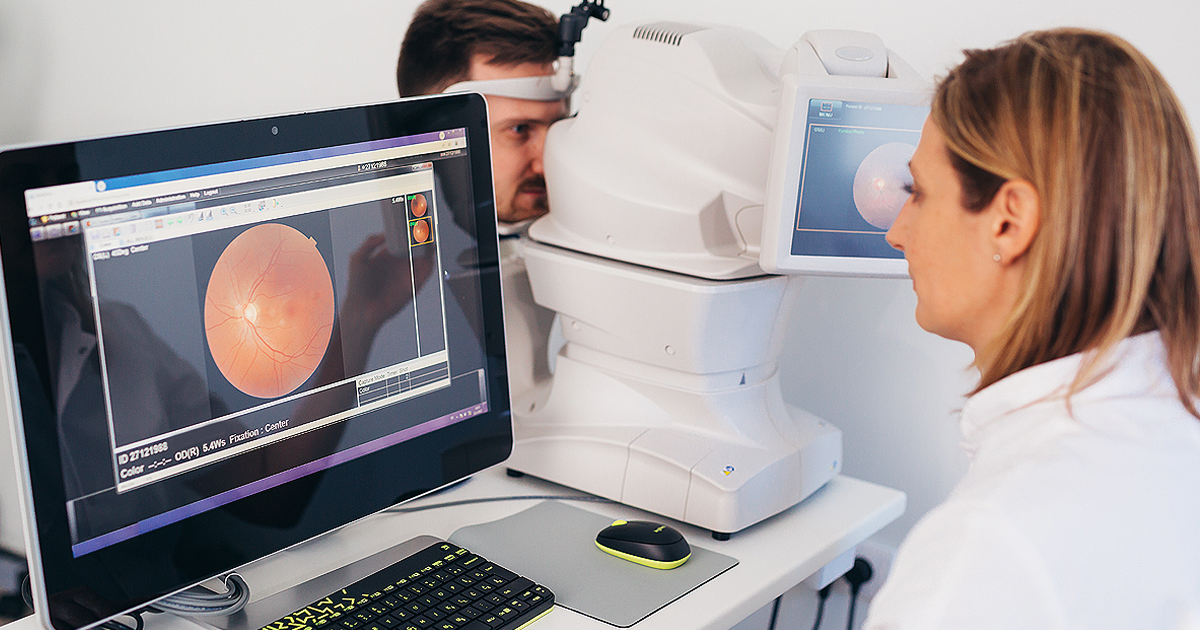January 4 is World Braille Day, which celebrates the birth of Louis Braille, the Frenchman who developed the reading and writing system that allows millions of blind and visually impaired people to read.
In 1824, at the age of just 15, Braille, who was blinded in both eyes by a childhood accident, created his tactile code and shared it with his schoolmates, and a revolutionary system was born. Today, the 253 million people around the globe who live with moderate to severe vision impairment (1) can navigate the world more easily thanks to Braille.
Of course at EyeMed, although we admire and celebrate Louis Braille, we like to envision a world in which fewer and fewer people need to use his innovation. That’s why we see World Braille Day as a perfect opportunity to highlight the importance of routine eye exams and vision benefits that make it possible for people to care for their eyes and see all life offers.
The impact of vision impairment
Unfortunately, nearly 200 years after Braille’s time, 50,000 Americans lose their sight each year (1), even though half of all cases of blindness could be prevented with proper vision care. (2)
Proactive care becomes only more important as we age. According to the Centers for Disease Control and Prevention, the leading causes of blindness and low vision in the U.S. are primarily age-related eye diseases such as macular degeneration, cataracts, diabetic retinopathy and glaucoma. (3)
Age isn’t the only culprit in vision loss, though:
• Prevent Blindness America (PBA) reports that diabetes affects more than 25 million Americans. (4)
• The American Optometric Association found that 12,000-24,000 people lose their vision every year from diabetes complications that often could have been prevented through early detection and timely treatment. (5)
• PBA projects that by 2050 vision loss will increase by 135%, to more than 10 million people. Cataracts, diabetic retinopathy, glaucoma and advanced age-related macular degeneration are forecast to grow by 77% to affect almost 70 million adults. (6)
The real potential cost to employers and employees
Those are a lot of statistics to digest, so take a moment to consider how all of those numbers play out in the real world. More than 1 of every 10 Americans has diabetes, which means most workforces probably include dozens of employees at increased risk of vision-related complications. (7)
The anticipated increase in vision issues also means an increase in total real costs, by 157%, from $145 billion in 2014, to $373 billion in 2050. (6)
And, as Baby Boomers grow older, more workers become caregivers for relatives—an often stressful, time-consuming role made more complex by the challenges of vision impairment. Among older adults, vision loss can lead to falls and fractures, depression, drug-related health issues resulting from misidentifying medication, and difficulty with managing basic daily tasks. That adds up to a diminished quality of life for aging individuals, as well as greater responsibility for their caretakers—many of which are employees companies rely on each day.
The power of eye exams in battling vision loss
It might sound simple, but comprehensive annual eye exams can make life better for employees and their loved ones, which in turn is good for business.
Vision benefits encourage effective preventive care, and regular routine eye exams can help identify signs of costly health issues early, such as hypertension, cholesterol and diabetes. They allow eye doctors to see blood vessels, arteries and a cranial nerve that create a clear picture of a person’s overall health. Obviously, earlier diagnosis of health problems enables patients to seek treatment sooner and improves the likelihood of a successful outcome.
Vision benefits encourage employees to schedule routine eye exams which means workers can take charge of their eye health and overall wellness. Diagnosed conditions can be treated sooner—and more cost-effectively—leading to a healthier workforce with potentially lower healthcare expenses.
According to the Vision Council, employers can save money each year in lost productivity resulting from the need to treat chronic illnesses-- a $7 gain for every $1 invested in vision coverage. (8)
For more on the bottom-line benefits of vision care, download our free Value of Vision infographic. Or, visit starthere.eyemed.com to learn how EyeMed can help improve the lives of employees with easy-to-use benefits with the freedom of choice that employees want for vision care and eyewear.
BL-1801-CB-251
1. World Health Organization, “Vision Impairment and Blindness,” 2017
2. Prevent Blindness America, 2014
3. Centers for Disease Control and Prevention, “Common Eye Disorders,” 2015
4. Prevent Blindness America, “Basic Diabetes Facts”
5. American Optometric Association, 2011
6. Prevent Blindness America, “The Future of Vision,” 2014
7. Healthline.com, “Type 2 Diabetes Statistics and Facts,” 2017
8. Workforce.com, “Special Report: Vision and Dental Benefits — More to See, More to Chew On,” 2015




